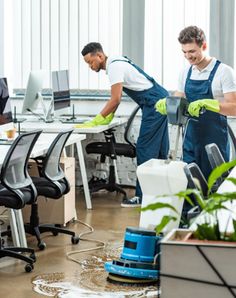A clean office doesn’t just look good—it fuels productivity, supports employee wellbeing, and sets the tone for professionalism. From reception desks to breakout rooms, dust, grime and clutter affect both how staff work and how visitors perceive your business. But what does good office cleaning really mean today?
With rising health expectations and hybrid working habits, workplaces need to go beyond the old “vacuum and bin” routine. It’s about consistency, hygiene, and building trust—especially in shared environments. Here’s what every Australian workplace should know and implement.
Why Cleanliness is a Productivity Driver
Clean desks are more than just visually appealing—they reduce mental fatigue. Multiple studies have shown that clutter increases stress and affects concentration. When surfaces are clear, keyboards are sanitised, and bathrooms feel fresh, staff are more likely to feel energised and stay on task.
But that’s not all. A clean space also reduces sick days. Touchpoints like doorknobs, phones, and lift buttons are often overlooked yet hold a high concentration of bacteria. Regular disinfection helps lower the risk of spreading germs, particularly in open-plan layouts or high-traffic areas.
Key Elements of a Professional Office Cleaning Standard
What does a quality Office Cleaning routine look like in practice? Here are the essentials that every business should expect:
1. Daily Surface Disinfection
Touchpoints like keyboards, desks, reception counters, and elevator buttons need daily wiping with hospital-grade disinfectants. Special attention should be paid to shared devices such as printers or kitchen appliances.
2. Scheduled Deep Cleaning
While daily tasks keep things ticking over, periodic deep cleans ensure the hard-to-reach zones—under furniture, ceiling vents, upholstery—don’t become health hazards. This can be weekly or monthly, depending on your workplace density.
3. Bathroom Hygiene
Bathrooms can make or break an office’s reputation. Toilet bowls, taps, mirrors and dispensers should be cleaned and sanitised daily. High-traffic offices may need twice-daily checks to refill supplies and handle spills promptly.
4. Breakroom & Kitchen Area
These spaces often slip through the cracks, yet they’re central to workplace culture. Cleaning should include microwaves, fridges, benchtops, sinks and even dish racks. Leftover food or grime builds quickly and attracts pests.
5. Window and Glass Care
First impressions matter. Office entry doors, interior glass partitions and windows need regular attention to keep the workspace feeling bright and open. Clean glass reflects well—literally and figuratively.
The Hidden Cost of Neglecting Office Cleaning
Putting off cleaning tasks can lead to more than just a dusty corner. Poor hygiene often results in:
- Staff absenteeism due to illness from bacteria and allergens
- Reduced client trust, especially if your office is client-facing
- Workplace complaints, lowering morale and increasing turnover
- Damaged assets, such as stained carpets or mould build-up in vents
It’s not about being spotless for show—it’s about long-term care. Dirty spaces impact staff retention, operational costs, and brand perception.
Eco-Conscious Cleaning: More Than Just a Trend
Sustainable cleaning practices are gaining ground—and rightly so. Offices are switching to plant-based cleaning solutions, microfibre cloth systems that reduce chemical use, and water-saving equipment.
Even choosing energy-efficient vacuums or timed cleaning shifts can make a difference. According to Sustainable Cleaning Industry Standards, green cleaning supports both the planet and employee health, as it minimises exposure to harsh chemicals.
When evaluating a cleaning provider, it’s smart to ask about their environmental policies and certifications. Not only does it reflect corporate responsibility, but it may also help you meet internal ESG targets.
Customising the Cleaning Schedule to Fit Your Office
There’s no one-size-fits-all here. A busy CBD legal office will have different needs to a creative co-working hub or remote-first startup. Factors like headcount, work hours, floorplan, and foot traffic should shape the cleaning plan.
For example:
- A 9-to-5 office might benefit from early morning cleans to reset the space before staff arrive.
- A rotating hybrid workforce may need fewer full cleans but stricter spot disinfection.
- Shared desks need daily wipe-downs, while fixed seating can be cleaned less frequently but more thoroughly.
Clear communication is key. Cleaning staff should be briefed on your site rules, security access, and any sensitive zones like server rooms or executive suites.
What to Look for in a Reliable Office Cleaning Partner
Choosing the right cleaning team means looking beyond pricing. Here are three qualities that matter most:
- Consistency: Look for a provider who offers regular audits, task tracking and quality checks.
- Discretion: Cleaning should never interrupt business flow or invade employee privacy.
- Flexibility: A good partner can scale their services with your business—whether that means adding extra shifts or responding to emergencies.
Businesses that prioritise Office Cleaning as part of their daily rhythm often see smoother workflows, happier teams, and a stronger professional image.
Final Word: Clean Space, Clear Mind
Workplace hygiene is no longer an afterthought—it’s a foundational element of staff wellbeing and operational excellence. Clean desks, fresh air, and hygienic bathrooms send a message: this business cares.
Whether you manage a 10-person startup or a corporate head office, adopting strong Office Cleaning standards isn’t just smart—it’s strategic.
Invest in a clean workspace, and everything else tends to run smoother.

